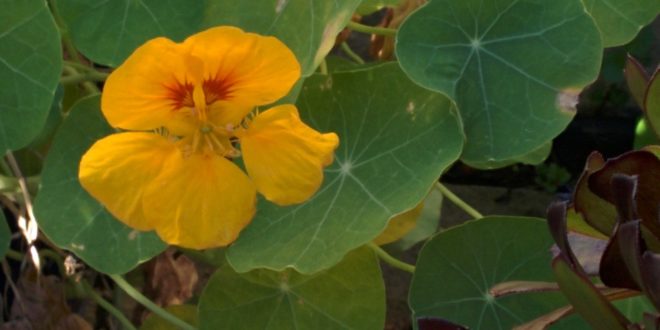Nasturtiums are great flowers for the Sunnyvale garden. They grow in most types of soil and soil moisture. The flowers are colorful and edible and have a peppery taste that can vary in intensity from flower to flower on the same plant. The strongest have a taste and aroma of horseradish. An added benefit is that the nasturtium fixes nitrogen. Similar to legumes (like peas or beans), the nasturtium develops nodules on the roots that extract and store nitrogen. This nitrogen can be released back into the soil as organic fertilizer after the above-ground part of the plant has died or been removed. Note: the key is not to pull the whole plant out: Leave the roots because they have the stored nitrogen.
Nasturtium is a genus of roughly 80 species of annual and perennial herbaceous flowering plants. It was named by Carl Linnaeus, the Swedish botanist, physician, and zoologist, who formalized the modern system of taxonomy (naming and classifying organisms) called binomial nomenclature.The nasturtiums received their common name because they produce an oil that is similar to that of watercress (Nasturtium officinale).
The genus Tropaeolum, native to South and Central America, includes several very popular garden plants, the most commonly grown being T. majus, T. peregrinum and T. speciosum. One of the hardiest species is T. polyphyllum from Chile, the perennial roots of which can survive the winter underground at altitudes of 3,300 metres (10,000 ft).
Plants in this genus have showy, often intensely bright flowers, and rounded, peltate (shield-shaped) leaves with the petiole in the centre. The flowers are bisexual and zygomorphic, with five petals, a superior three-carpelled ovary, and a funnel-shaped nectar spur at the back, formed by modification of one of the five sepals.








